I want to see the interfaces of an ".ocx" file. Like this:

But for some .ocx, I can only see 5 functions, Like this:

The question is: How can I see the interfaces of these ocx file. I have try this:
A.
a) I want register it and see it in visual studio. But when I register it, an error appears "LoadLibrary(path:\filename.ocx) failed". Like this:

b) Then I used 'Dependency Walker' open the ocx, found the file dependences no DLL files .

c) How can I register it?
B. I use "Dll Export Viewer" and now I can see the function's name but still can not get the function's parameters. How can i get the parameters of a function?